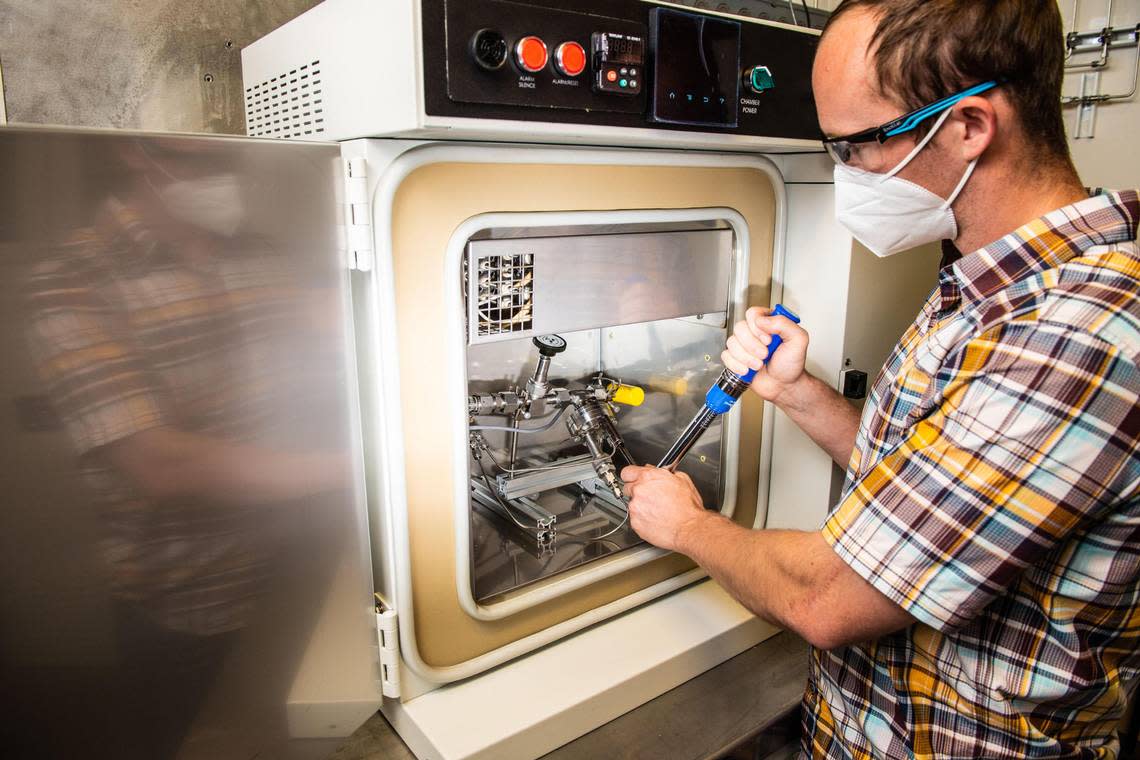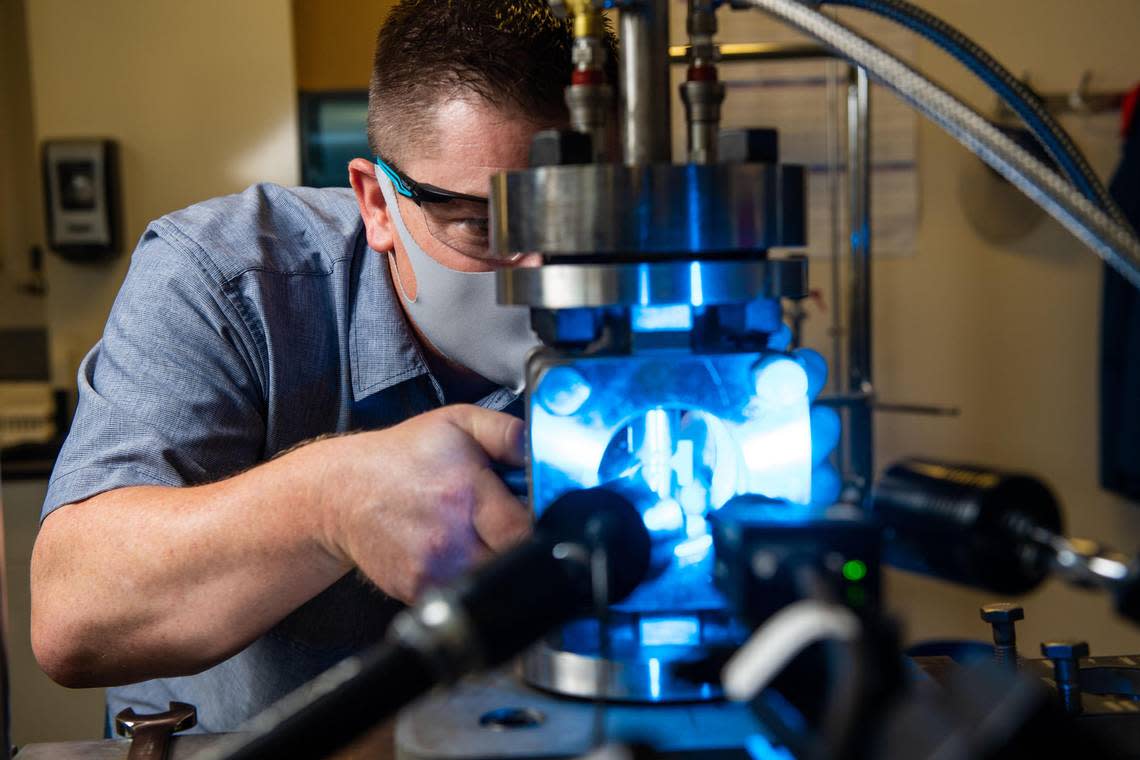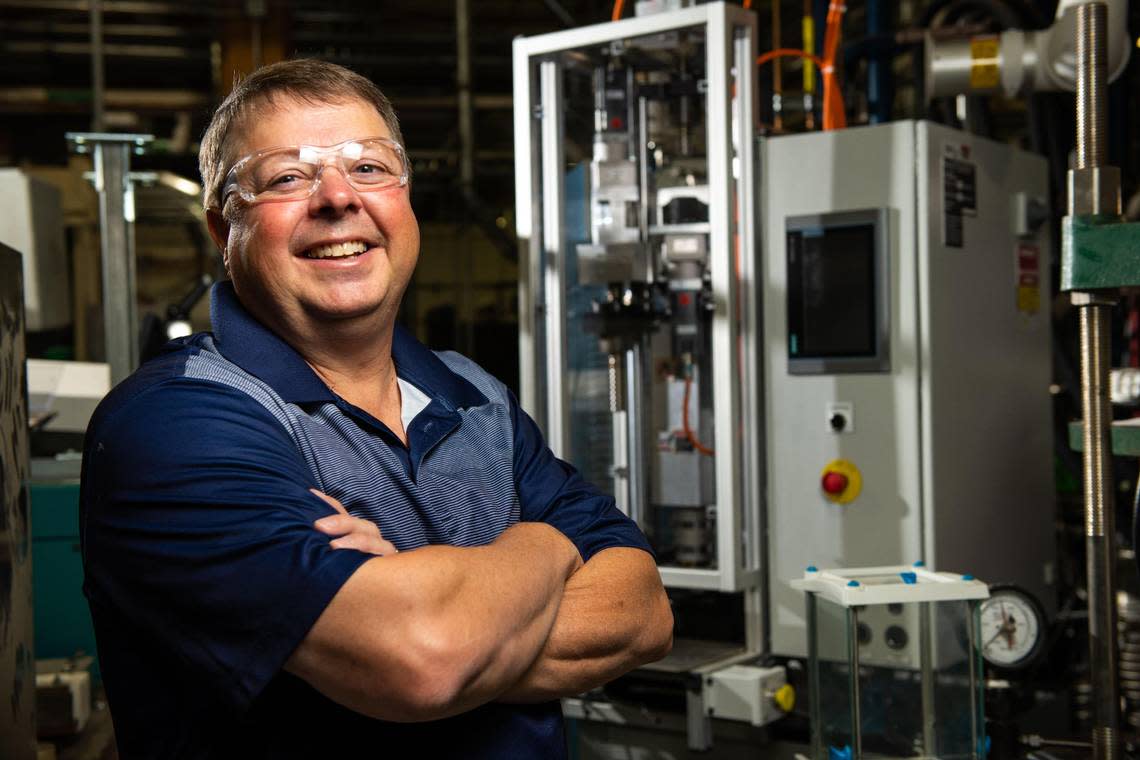Hydrogen research in Tri-Cities could help climate change and carbon emissions
If you’ve ever pulled a rubber band from your junk drawer only to find it brittle and useless, you know that rubber, like many materials, changes over time.
At the Department of Energy’s Pacific Northwest National Laboratory, some scientists devote their entire careers to understanding the performance and behaviors of different materials, addressing their limitations and exploiting their beneficial properties.
Because clean hydrogen can play an important role in addressing climate change and the nation’s goals to achieve net-zero carbon emissions, these researchers are investigating how materials — including rubber — can withstand not only the test of time, but also the stresses caused by temperature and pressure changes in hydrogen systems.
Hydrogen can be produced by using electricity to split water into hydrogen and oxygen. If clean energy — such as nuclear, wind or solar — is used to generate the electricity, the hydrogen is clean too.
PNNL scientists are developing methods for producing clean hydrogen, including advanced water-splitting technologies called solid oxide electrolysis and ways to use biomass and wastes paired with carbon capture techniques.

Regardless of how it is produced, clean hydrogen can be used in energy-intensive manufacturing processes, such as for steel and fertilizer, as well as to power heavy-duty vehicles and for seasonal energy storage.
Researchers at PNNL are collaborating with other national laboratories and industry to enable the promise of hydrogen by exploring the materials challenges associated with hydrogen infrastructure, including its production, delivery, storage and use.
They are examining whether materials are compatible with hydrogen to ensure safety and minimize potential leaks.

In one project, researchers drew on their expertise in materials science, chemistry and computational modeling, as well as PNNL’s high-pressure hydrogen systems and testing capabilities, to understand how a common rubber additive changes when exposed to high-pressure hydrogen.
Researchers sought to determine if materials such as rubber seals in compressors, valves, pipelines and hoses deteriorate as a result of hydrogen permeating the materials and because of the mechanical stresses associated with repeated pressure cycles.
By learning more about why and when this happens, researchers can develop new materials to help prevent seal failures, which commonly leads to required maintenance in hydrogen delivery systems.
Results of this study showed that the additive used to soften rubber was separating and spreading through the rubber as pressure increased and with additional cycles of exposure, which eventually could cause the rubber’s surface to blister and crack.

Scientists looked what was happening at an atomic scale using instruments at the Environmental Molecular Sciences Laboratory, a DOE user facility at PNNL.
Not only could they pinpoint where the changes were occurring, but they also identified the chemical elements in those areas. Additional experiments helped them further understand the origination of voids that eventually led to cracks.
Working with industrial collaborators, researchers evaluated new materials that significantly decreased gas swelling that can contribute to these voids and structural damage.
In another project, scientists at PNNL sought to determine exactly how exposure to hydrogen, stress and oxidation can lead to degradation in high-strength steels.
Using state-of-the-art instrumentation, some at PNNL’s new Energy Sciences Center, they examined how hydrogen causes the steel to become brittle, how the hydrogen is distributed within this material and how it rearranges the material’s individual atoms.
Researchers are now using computer modeling to explore how those atoms could be arranged differently to improve the material’s ability to withstand hydrogen environments.
The path to sustainable, decarbonized energy in the United States will require a host of new solutions, including expanding the use of clean hydrogen into new areas, from manufacturing to transportation.
And ongoing research into the intricacies of materials used in the hydrogen infrastructure will help industry choose materials that perform safely, with a longer life and reduced costs.
Steven Ashby is director of Pacific Northwest National Laboratory in Richland, WA.
